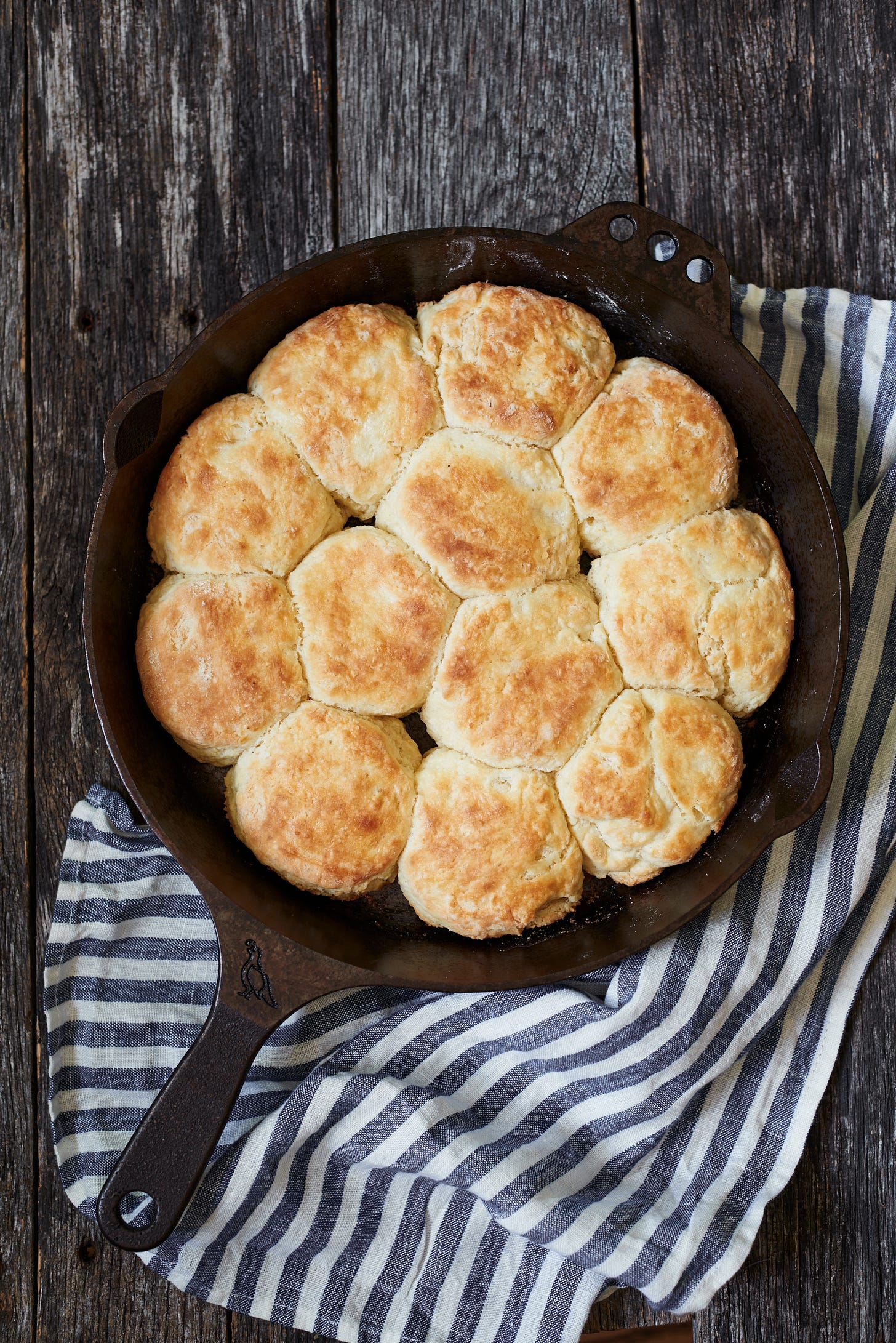It’s Buttermilk Biscuit Day! - No. 286
How to bake better biscuits + a basil buttermilk salad dressing for Memorial Day

AS I WRITE THIS POST, rain pummels our roof and thunder booms so loud our yellow labrador retriever darts into the closet to hide. What a crazy and violent spring we’ve had with tornadoes, flooding, and storms across America.
I pray the power stays on so I can preheat the oven and bake some biscuits today, smear them with butter, and drizzle with honey. In my childhood home, we had hot biscuits on the dinner table almost nightly. My father loved them with butter and sorghum, and my mother cut them into small rounds that fit perfectly into our little hands.
I had no idea the education I would receive in making biscuits when I set out to write my baking book that publishes this fall. But let me tell you—I learned a lot! As a bit of a sneak peek, I’m sharing some of those discoveries today.
Let’s start with a big difference between biscuits—those made with buttermilk and those made with plain (sweet) milk. The latter are called baking powder biscuits, lightened with baking powder and pulled together with plain milk. Here’s my favorite recipe for them from the Atlanta legend Henrietta Dull (Mrs. S.R. Dull), author of Southern Cooking, first published in 1928.
Mrs. Dull‘s baking powder biscuits
Born in rural Laurens County, Georgia, in the middle of the Civil War, Henrietta Dull worked through hardship to become a regional cooking celebrity. She wrote food columns in the Sunday Atlanta Journal Magazine and taught cooking classes throughout the region. Her manner was straight-forward, and her recipes were simple but thorough. Baking powder became the friend of the rural South, enabling anyone to bake biscuits quickly and without buttermilk or eggs.
Here’s how Mrs. Dull baked 45 to 46 tea-size 1 1/2-inch biscuits:
Preheat the oven to 400ºF. Place 2 cups all-purpose flour, 4 teaspoons baking powder, 1 teaspoon salt, and 1 teaspoon sugar in a large bowl and stir to combine. Drop spoonfuls of 1/4 cup vegetable shortening or lard (or butter) over the top and with your fingertips work the fat into the flour until it has the texture of coarse crumbs. Pour in 1/2 cup ‘’sweet’’ whole milk, and with a fork stir the mixture into a dough.
Dust a work surface with a little flour, and turn the dough onto the flour. With floured hands, pat the dough to 1/2-inch thickness, and with a floured rolling pin, roll it to about 1/3-inch thickness. Flour a small 1 1/2-inch cutter, and stamp out the biscuits. Prick each one several times with a fork so steam escapes when they bake. Place them 1/2 inch apart on a baking sheet, brush with a little more milk, and bake until lightly browned, 10 to 12 minutes.
Buttermilk biscuits are more dense in texture
Buttermilk technically is the fermented liquid left behind from churning cream into butter. But what is sold in most of our supermarkets today is a far cry from the original buttermilk. So if you want to bake the best biscuits with buttermilk, look for buttermilk from a local dairy and always opt for whole milk buttermilk. We are fortunate in Tennessee to be able to buy Cruze buttermilk, which is produced from the milk of Jersey cows and higher in butterfat. Whole buttermilk absolutely makes the best biscuits, cornbread, panna cotta, and ice cream.
East Tennessee cook Sharon Benton, wife of Allan Benton, known for his fine country hams, makes the simplest biscuits with just 2 cups self-rising flour (from Boonville mill in North Carolina) and 1 cup whole Cruze buttermilk.





